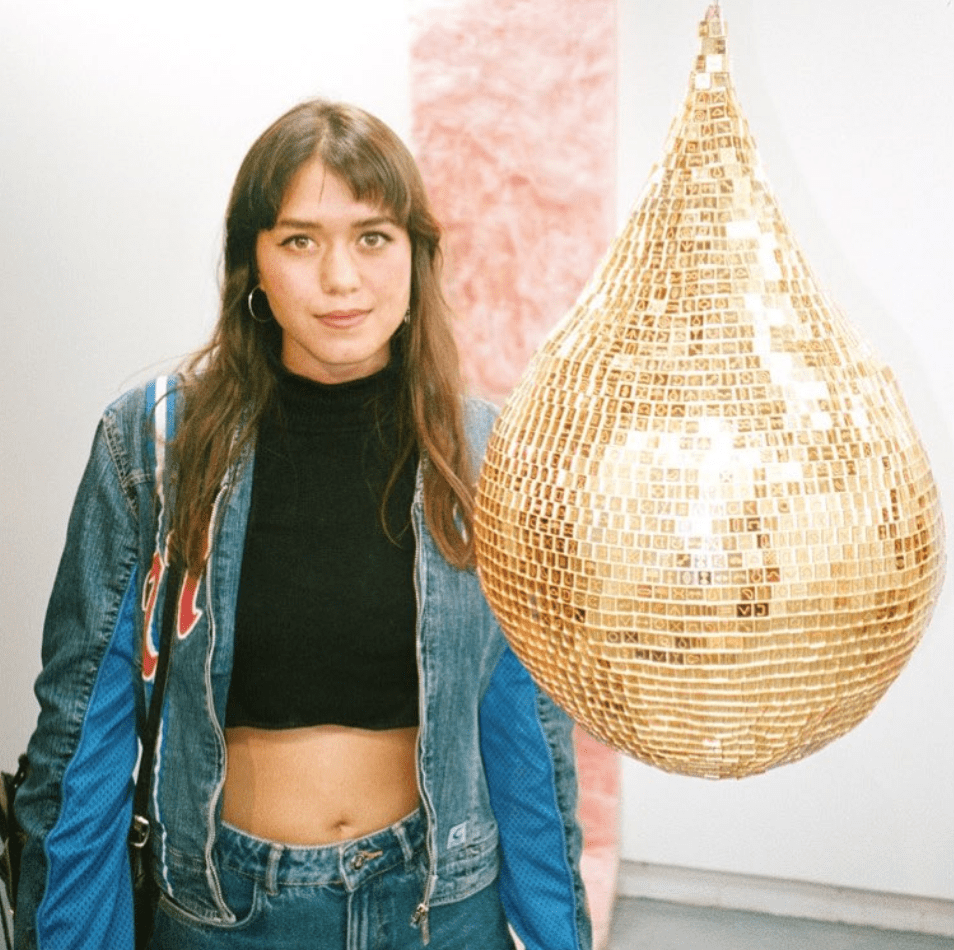Camille Jodoin-Eng (b.1991) is an artist based in Toronto. Her work is an experiment in intuitive language, a meditation of interplay between physical and psychological space. Jodoin-Eng has developed a studio practice that involves drawing, sculpture, fabrication, installation and a growing visual language of personal symbols. Select exhibitions include: Wires webs veins nerves roots stems (8-11 Gallery), Plaza (The Gladstone Art Hut), Athenaeum (Project Gallery) and Trident (Little Sister Gallery). Her work has recently been featured by Vice, as well as the CBC. She completed her BFA at OCAD University (2014) and is currently represented by Art Works Consulting.
Camille and I had the chance to speak while she was preparing for her solo exhibition that opens November 29th, 2018 at Project Gallery on 1210 Dundas St. East, Toronto, Ontario. This interview has been edited and condensed for clarity. – Jessica Mensch
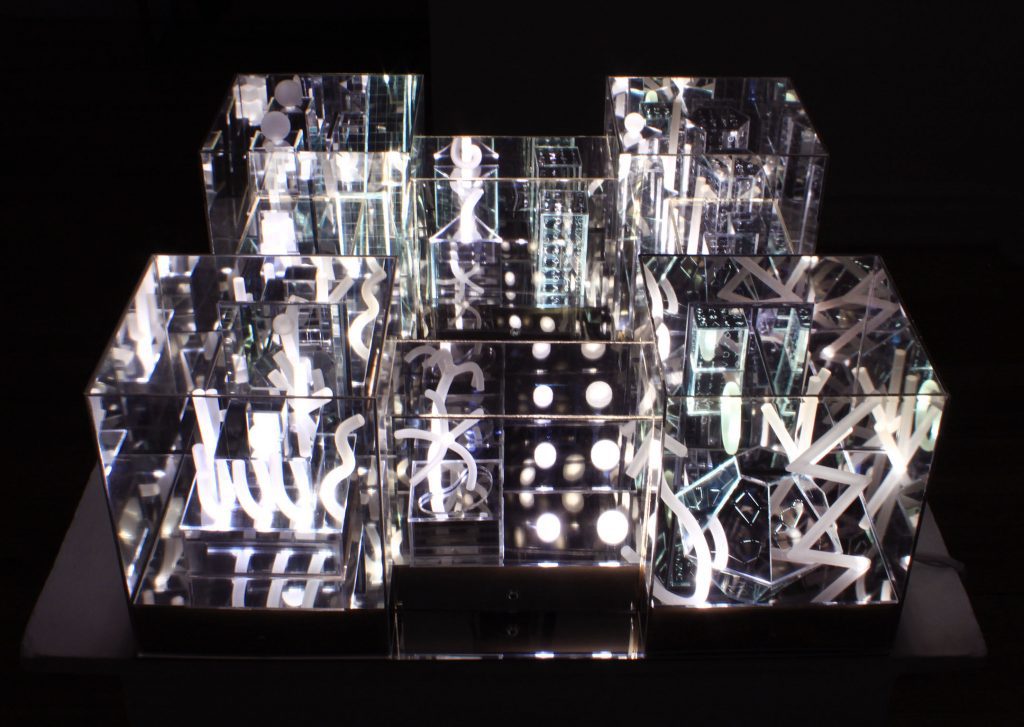
B O D Y: Like Yayoi Kusama and her Infinity Mirror installations, you create an endless experience of space using strategically placed mirrors. Within these reflected environs you place translucent, hand-sculpted symbols. How does this environment of reflections relate to these symbols?
Camille Jodoin-Eng: Part of my fascination with the mirrored surface is that it always reveals to you something other than itself. When you create a completely mirrored space, in your mind you see an infinite space, even if you know there are physical limits to this space. I’ve always thought of this to be a symbolic representation of the mind and spirit, contained within the brain, the skull, the body, but the connections in our brains are limitless, you can’t contain your conscious and unconscious. So you have this infinite intangible space (mind space) inside a tangible space (body space). The architecture of the mirrors to me represents our body framework while all the symbols swirling around are thought bubbles, emotions and intuitions.
I’ve realized I create work to help me understand abstract concepts I have trouble grasping. I’m a visual learner and it helps me to understand things if I can see them. I think a lot of the time I’m trying to bring physical form to abstract notions I have trouble turning around in my mind. I’ve realized through the past couple years of making work that I have a big disconnect between my mind and body. Maybe these works are trying to help me work through this disconnect of physical and psychological.
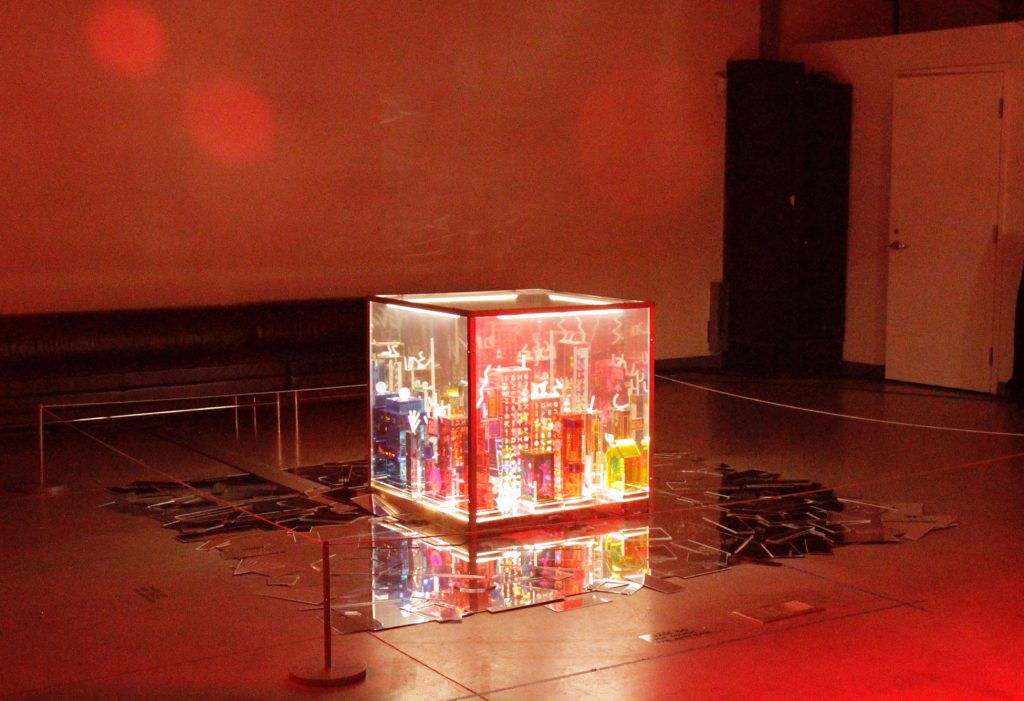
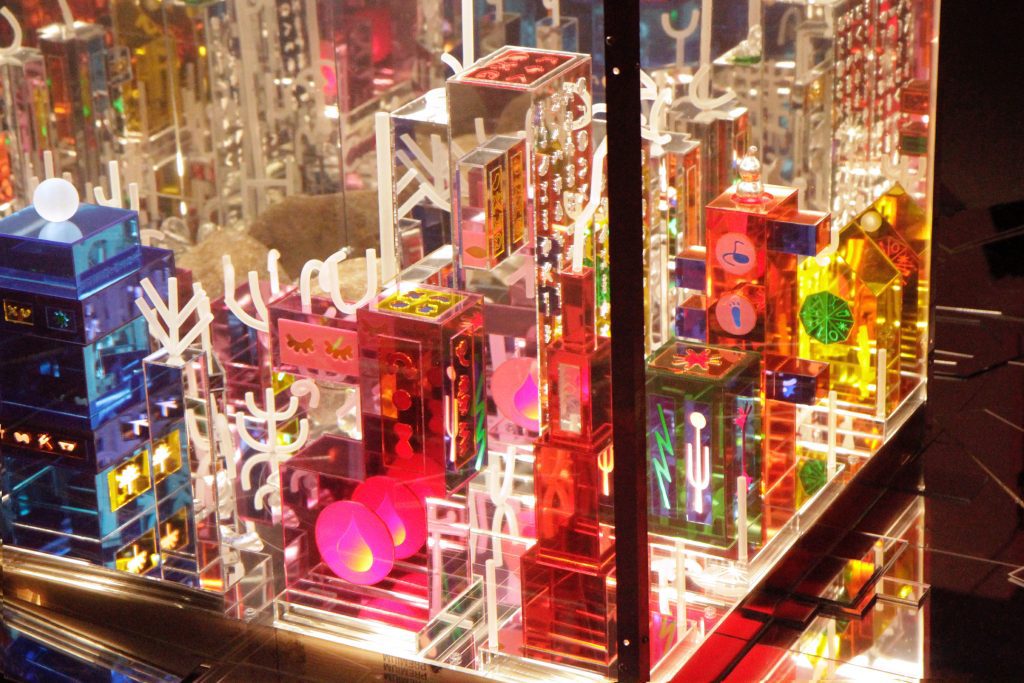
B O D Y: There’s something very beautiful about how you choose to contain the worlds you create – your symbols and spaces exist both comfortably in the our world yet offer a vision into another world/space that is nebulous, psychologically charged and futuristic. At times they remind me of the Wizard of Oz’s luminous glass palace or of early 3D video graphics – like those found in Tron. Does this imagery resonate with you or are these just my own associations?
Camille Jodoin-Eng: I’ve definitely been heavily influenced by sci-fi movies, as well as movie sets. I think sci-fi is a very creative genre because the author/director has to make up the rules to an entire new universe, every detail from physical surroundings to social constructs to the laws of physics. It’s interesting because people often tell me my work looks either ancient or futuristic. I love the idea of the future and the past being both present – perhaps because this precise moment is the division between the two. Maybe time is circular instead of linear?
B O D Y: I can see how one could associate elements of your work with an older age. I have a book of ancient symbols that was published in the 60’s whose illustrations share a similar quality to yours – specifically a thin, even, linear line, the type of line that is meant to connate an abstract concept. Even your use of plastic and neon as optical devices is a refashioning or innovation on older optical materials like candlelight, tungsten bulbs and crystal prisms.
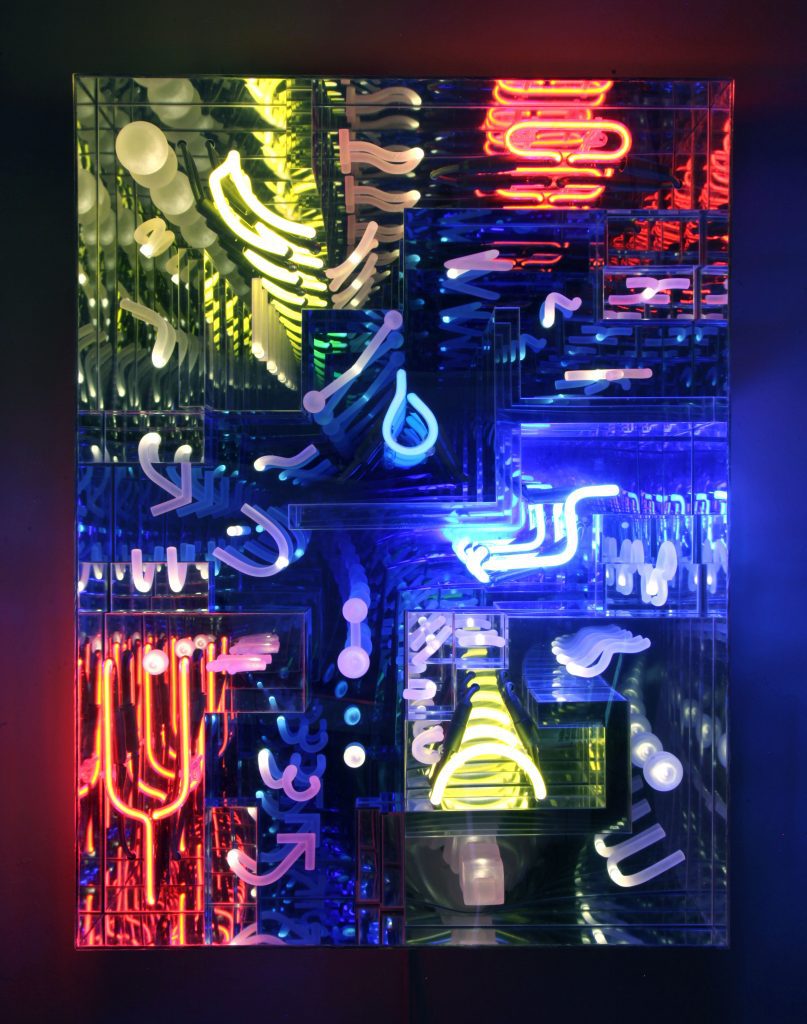
Camille Jodoin-Eng: It’s funny when I first was learning how to work with neon, I remember being in a neon studio looking at all the colored light in the glass tubes thinking it looks like how I imagine the northern lights would look! I was really interested in the physicality of the neon gas and how natural it is. Even though neon is culturally symbolic of the opposite of that.
B O D Y: Yeah. It’s funny how there is a perceptual contradiction between materials based on the context in which they are most often encountered. Like you said, you seem to pivot off of this to represent the amorphous structure of the unconscious.
Camille Jodoin-Eng: Definitely
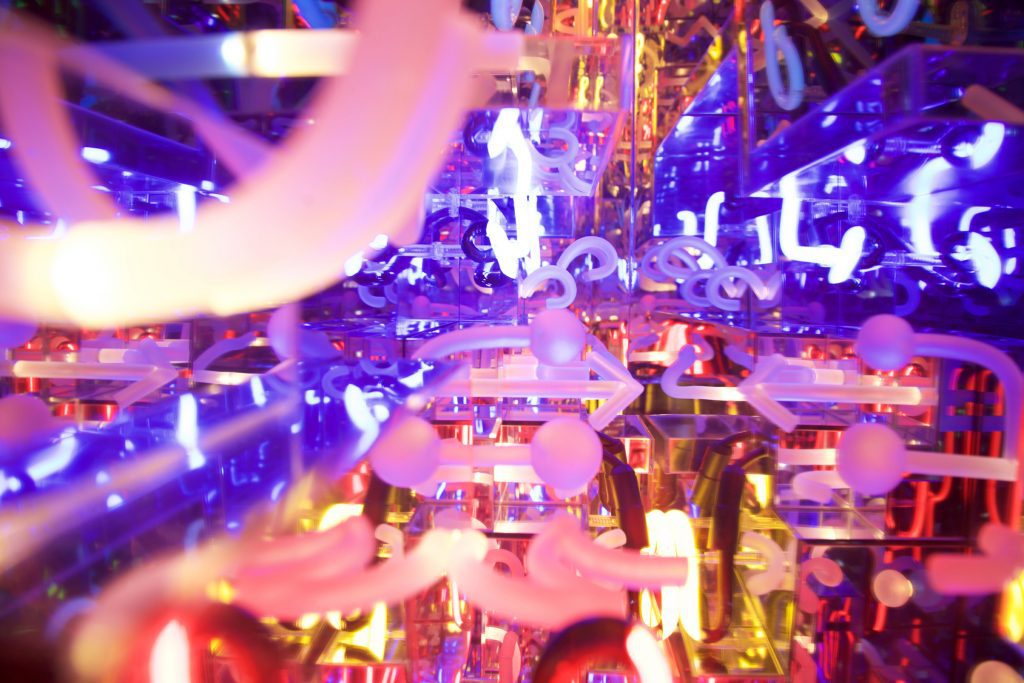
B O D Y: You’ve mentioned in past interviews that you would like to make your mirrored objects life-size. How do you imagine this transformation to change the meaning of your work? Or rather, where does this impulse to enlarge your come from?
Camille Jodoin-Eng: Good question, still trying to figure this out myself! I think it seems like a natural progression for me, to start with 2D drawings, then move to 3D architectural models, and then finally bring the plans to life. Maybe it’s comparable to the shift to VR, that actually being inside a space will make it more real then just being able to see it from a distance. Maybe the human connection will be deeper if we can both exist physically inside this plane simultaneously. I think there also might be some sort of “doll house” complex at play here, creating little realities that you have control/power over while existing in a real world where you are limited, and then bringing this reality to life.
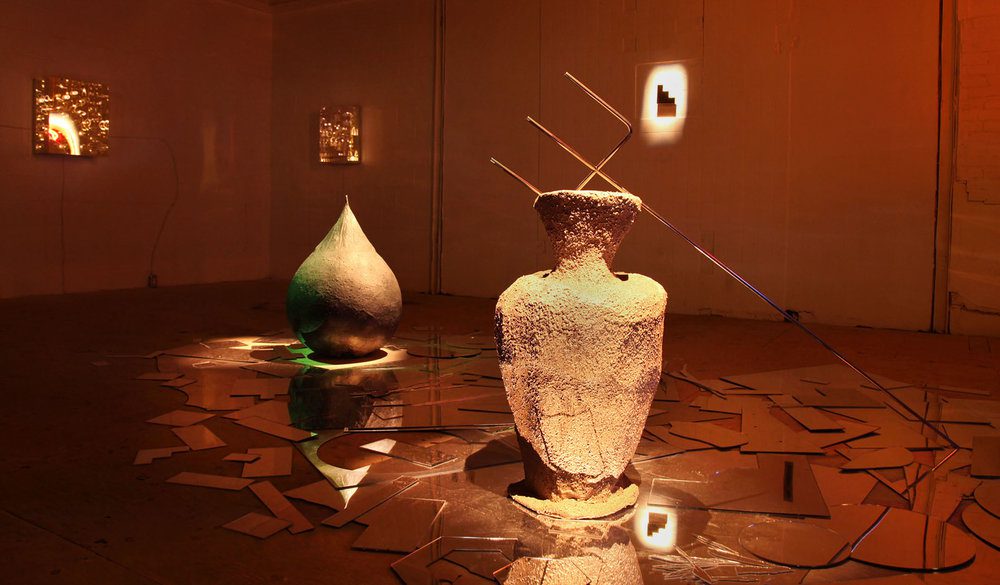
B O D Y: Yes, there’s something magical in that transformation! You see it in Alice in Wonderland and Valerie and Her Week of Wonders and even The Wizard of Oz. It’s a shared psychedelic experience.
Camille Jodoin-Eng: YES
Further Reading:
For more of Camille’s work visit her website at http://www.camille-jodoineng.ca/
